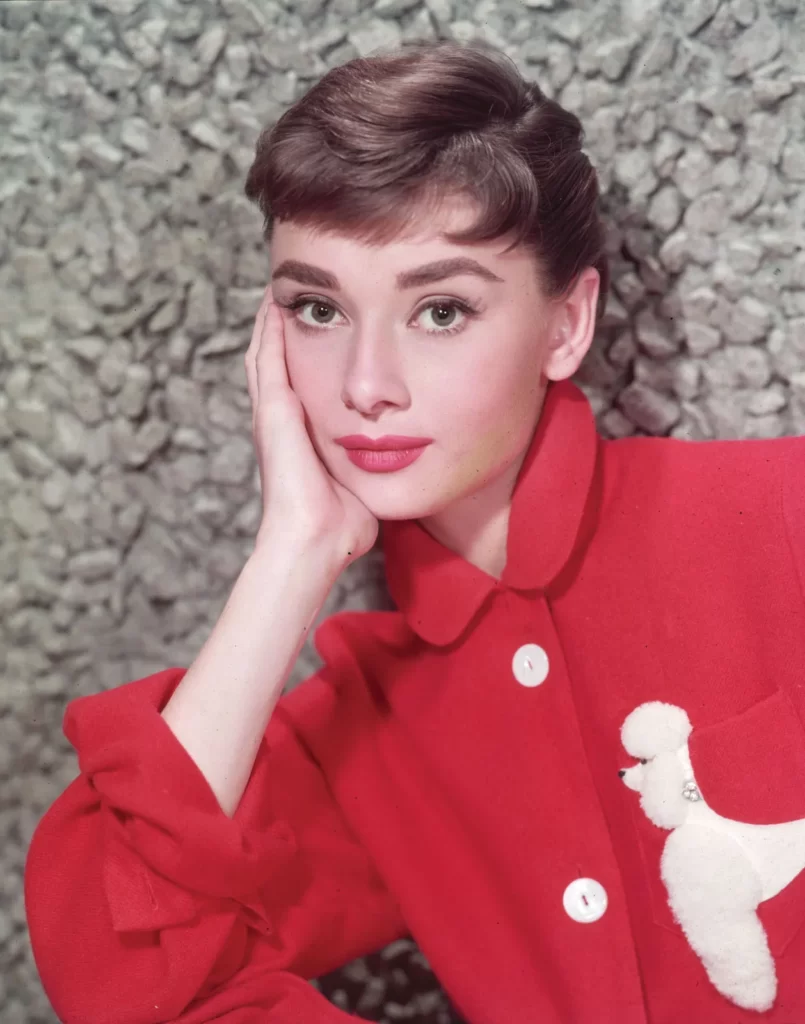
Audrey Hepburn, originally known as Audrey Kathleen Ruston, graced the world with her luminous beauty and elegant demeanor. Born on May 4, 1929, in Brussels, Belgium, she later found her home in Tolochenaz, Switzerland, where she would leave an indelible mark. Audrey, a Belgian by birth, held British citizenship through her father and received her education in the English lands, thanks to the baroness Ella Van Heemstra and Joseph Victor Anthony Ruston, who adopted the illustrious surname Hepburn-Ruston.
The turbulence of World War II led Audrey and her mother to the Netherlands, seeking refuge amidst the chaos. Amid Nazi occupation, Audrey endured hardships but managed to continue her education and pursue her passion for ballet. She overcame adversity and persisted. Her mother even changed her name briefly to Edda Van Heemstra to conceal her British lineage, a testament to the resilience of a young girl whose destiny was destined for greatness.
Audrey’s early adulthood was marked by a fervent pursuit of the arts. She immersed herself in acting, modeling, and dancing, gradually making her mark in the world of film, all under the name Audrey Hepburn. It was in Monte-Carlo where she captured the attention of the esteemed French novelist Colette, who recognized Audrey’s potential for the lead role in the stage adaptation of “Gigi.” With grace, she embraced this challenge, receiving accolades when the play graced Broadway in 1951. A shining star had risen.
Her cinematic journey took her to Rome, where she illuminated the screen in her debut major American film, “Roman Holiday” (1953). Her portrayal of a young princess yearning for adventure and romance captivated hearts, earning her the prestigious Academy Award for Best Actress. Audrey’s talent radiated, transcending the silver screen and establishing her as a true luminary.
In 1954, Audrey’s path led her back to the stage in the role of a water nymph in “Ondine,” a production where she met her future husband, Mel Ferrer. Her performance earned her a Tony Award, and while it marked her last appearance on Broadway, it was far from the end of her cinematic journey. Audrey’s charm graced romantic comedies like “Sabrina” (1954) and “Funny Face” (1957), as well as powerful dramatic works such as “War and Peace” (1956) and “The Nun’s Story” (1959).
The 1960s unveiled a more mature and worldly Audrey, evolving beyond the ingenue image. She epitomized sophistication as Holly Golightly in “Breakfast at Tiffany’s” (1961), added a layer of intrigue in “Charade” (1963) alongside the iconic Cary Grant, and portrayed complex characters, like the free-spirited woman in “Two for the Road” (1967). Yet, it was her role as Eliza Doolittle in “My Fair Lady” (1964) that stirred controversy. Her performance was lauded, but some yearned for Julie Andrews, the original stage star. Audrey’s talent remained undeniable, even in the face of such challenges.
A period of semi-retirement followed, marked by her personal life taking center stage. Audrey parted ways with Ferrer, marrying an esteemed Italian psychiatrist, and choosing family over career. In 1976, she returned to acting with “Robin and Marian,” proving that her brilliance on screen persisted. Then, in 1988, she embarked on a new mission as a special goodwill ambassador for the United Nations Children’s Fund (UNICEF). Audrey’s heart, now devoted to humanitarian work, touched the lives of countless children across Latin America, Africa, and Asia, a legacy of compassion that endured until her battle with cancer ended on January 20, 1993.
Her commitment to making the world a better place did not go unnoticed. The Academy of Motion Picture Arts and Sciences recognized her posthumously with the Jean Hersholt Humanitarian Award later that same year, solidifying Audrey Hepburn’s status as a beloved actress, a symbol of grace and kindness, whose legacy shines on as a beacon of hope and inspiration.